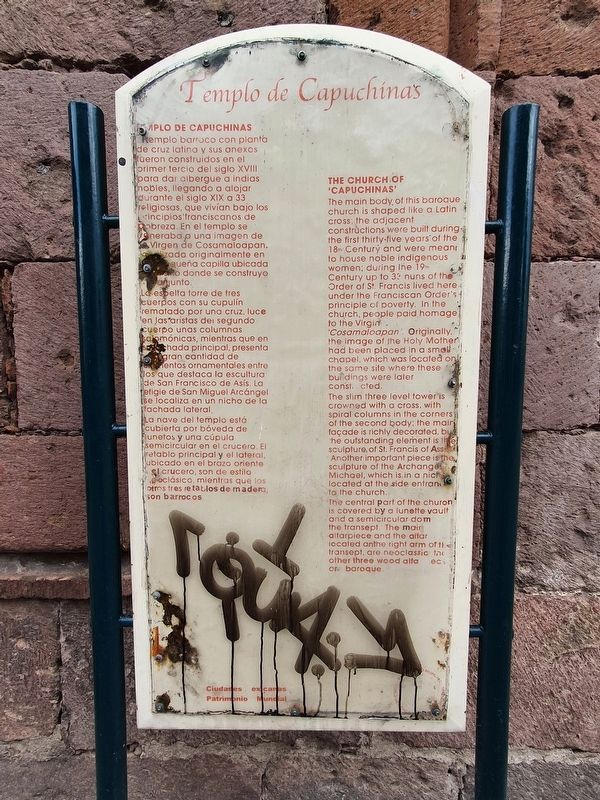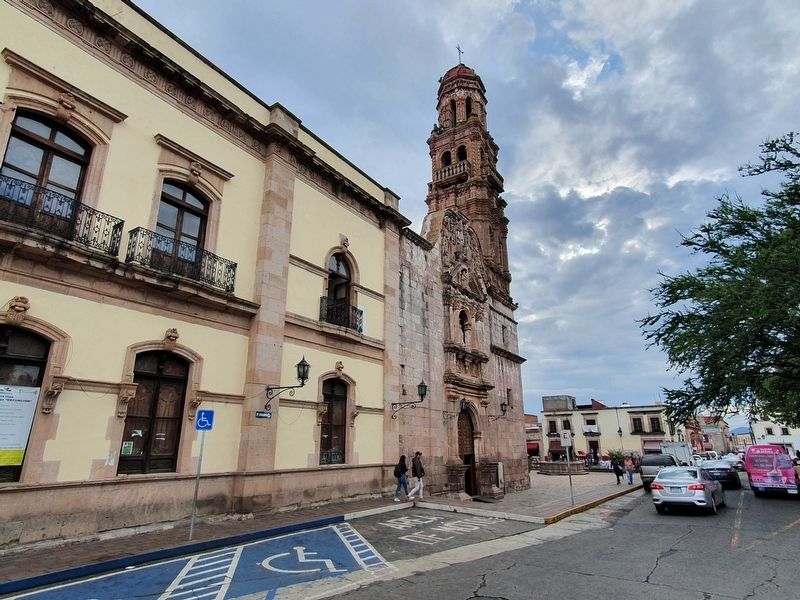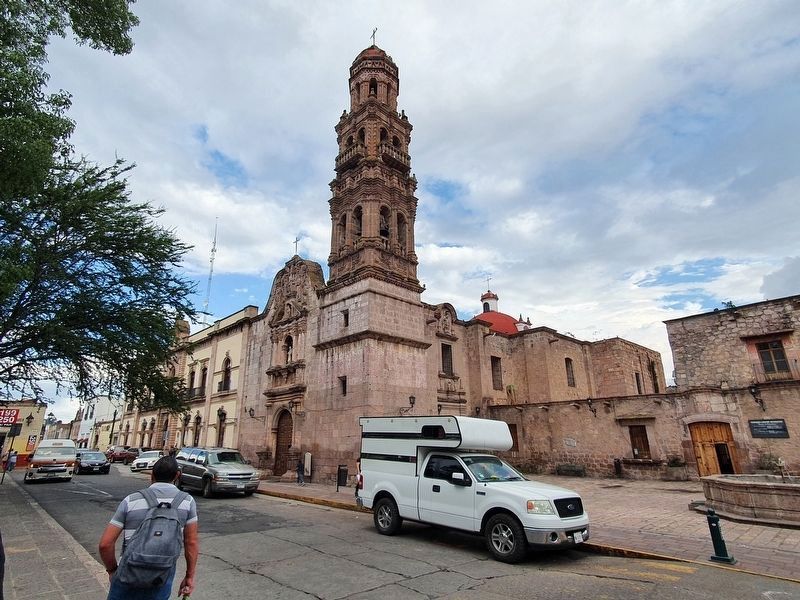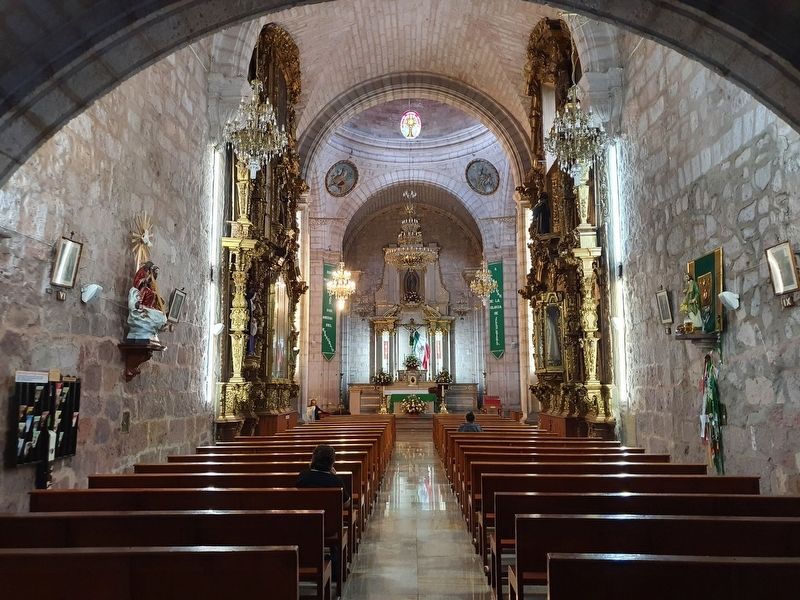Morelia, Michoacán, Mexico — The Pacific Coast (and Central Highlands)
The Church of 'Capuchinas'
Templo barroco con planta de cruz latina y sus anexos fueron construidos en el primer tercio del siglo XVIII para dar albergue a indias nobles, llegando a alojar durante el siglo XIX a 33 religiosas, que vivían bajo los principios franciscanos de pobreza. En el templo se veneraba a una imagen de la Virgen de Cosamaloapan, localizada originalmente en una pequeña capilla ubicada en el sitio donde se construyo el conjunto.
La esbelta torre de tres cuerpos con su cupulín rematado por una cruz, luce en las aristas del segundo cuerpo unas columnas salomónicas, mientras que en su fachada principal, presenta gran cantidad de elementos ornamentales entre los que destaca la escultura de San Francisco de Asís. La efigie de San Miguel Arcángel se localiza en un nicho de la fachada lateral.
La nave del templo está cubierta por bóveda de lunetos y una cúpula semicircular en el crucero. El retablo principal y el lateral, ubicado en el brazo oriente del crucero, son de estilo neoclásico, mientras que los otros tres retablos de madera, son barrocos.
The Church of 'Capuchinas'
The main body of this baroque church is shaped like a Latin cross; the adjacent constructions were built during the first thirty-five years of the 18th Century and were meant to house noble indigenous women; during the 19th Century up to 33 nuns of the Order of St. Francis lived here under the Franciscan Order's principle of poverty. In the church, people paid homage to the Virgin 'Cosamaloapan'. Originally, the image of the Holy Mother had been placed in a small chapel, which was located on the same site where these buildings were later constructed.
The slim three level tower is crowned with a cross, with spiral columns in the corners of the second body; the main façade is richly decorated, but the outstanding element is the sculpture of St. Francis of Assisi. Another important piece is the sculpture of the Archangel Michael, which is in a niche located at the side entrance to the church.
The central part of the churon is covered by a lunette vault and a semicircular dom the transept. The main altarpiece and the altar located on the right arm of the transept, are neoclassic the other three wood altar pieces are baroque.
Topics. This historical marker is listed in these topic lists: Architecture • Churches & Religion • Colonial Era.
Location. 19° 41.897′
N, 101° 11.344′ W. Marker is in Morelia, Michoacán. Marker is on Calle Ortega y Montañes just west of Calle de Velázquez de León, on the left when traveling west. Touch for map. Marker is at or near this postal address: Calle Ortega y Montañes 242, Morelia MIC 58000, Mexico. Touch for directions.
Other nearby markers. At least 8 other markers are within walking distance of this marker. Adolfo Tremontels (about 180 meters away, measured in a direct line); House of General Morelos (approx. 0.3 kilometers away); The Angel Fountain (approx. 0.4 kilometers away); Ex-convent of San Francisco (approx. 0.4 kilometers away); Del Gallo Font (approx. 0.4 kilometers away); Adolfo Maillefert (approx. 0.4 kilometers away); Third Battle of Puebla (approx. 0.4 kilometers away); José María Morelos (approx. 0.4 kilometers away). Touch for a list and map of all markers in Morelia.
Regarding The Church of 'Capuchinas'. The English translation included on the marker is good, except for the last paragraph. A reasonable translation could be: The nave of the temple is covered by a vault of lunettes and a semicircular dome in the transept. The main and side altarpieces are located on the east arm of the transept and are Neoclassical in style, while the other three wooden altarpieces are Baroque.
Credits. This page was last revised on October 13, 2021. It was originally submitted on October 13, 2021, by J. Makali Bruton of Accra, Ghana. This page has been viewed 168 times since then and 15 times this year. Photos: 1, 2, 3, 4. submitted on October 13, 2021, by J. Makali Bruton of Accra, Ghana.



